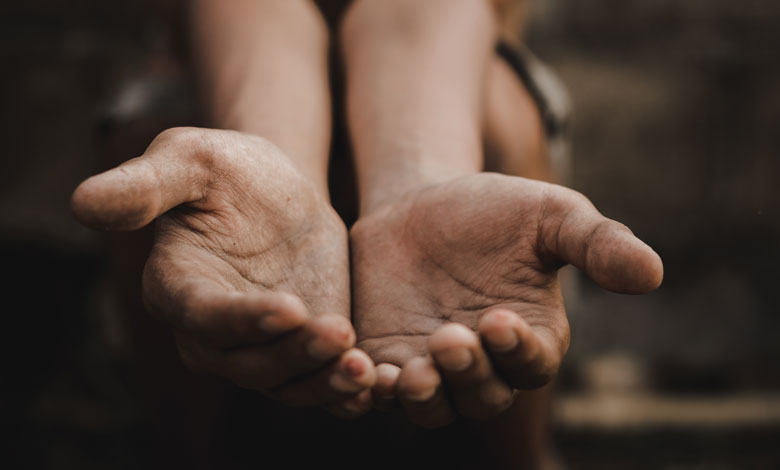ESRI suggests change to poverty metric

The Economic and Social Research Institute (ESRI) suggests altering the current measure of poverty in the State and introducing a two-tier Child Benefit system to address childhood deprivation and poverty.
In The effect of child-related benefits on child poverty and deprivation in Ireland, published in June 2025, the ESRI recommends multiple measures to reduce childhood deprivation and poverty.
The report estimates that the 2025 child or at-risk-of-poverty (AROP) rate is 13.9 per cent; the child material deprivation rate is 19.5 per cent; and the child consistent poverty rate is 5.6 per cent. It asserts that child-contingent benefits achieve the following:
- reduce the child AROP rate by 10 percentage points;
- reduce the child material deprivation rate by 3.2 percentage points; and
- reduce the child consistent poverty rate by 6.7 percentage points.
The report estimates the following impact of the absence of in-kind child-contingent benefits:
- child AROP rate would be 1.5 percentage points higher;
- child material deprivation rate would be 0.6 percentage points higher; and
- child consistent poverty rate would be 1 percentage point higher.
To reduce childhood deprivation and poverty, the report recommends reforms including a means-test second tier of child-benefit, and increases to the Working Families Payment, Child Support, and Child Benefit. The report determines that introducing a second tier of Child Benefit would produce the most cost-effective reduction and estimates it would achieve the following:
- 4.6 per cent reduction of child AROP rate;
- 0.7 per cent reduction of child material deprivation rate; and
- 2.1 per cent reduction of child consistent poverty rate.
| Distinction between deprivation and at risk of poverty Deprivation:
The enforced inability to afford two or more items from a defined list of 11 items that are considered the norm for other people in society. E.g inability to afford to keep the home adequately warm; inability to afford new clothes. At risk of poverty: A person is at risk of poverty if their household has an equivalised disposable income below 60 per cent of the national median equivalised disposable income. |
Measuring poverty
Deprived children in Ireland: Characterising those who are deprived but not income-poor, published in June 2025, finds that children who experience deprivation but are not classified as AROP fall outside the official measure of consistent poverty, which combines the two. The State’s current national poverty strategy, the Roadmap for Social Inclusion 2020-2025, is underpinned by this measure.
AROP households are those with disposable incomes below 60 per cent of the median equivalised income for Ireland. Deprived households are those with an enforced lack of two or more of 11 items, including home heating or eating protein once every two days. The report asserts that these families are at risk of falling into poverty and recommends the creation of “comprehensive policies to improve living standards for vulnerable families”.
“Current poverty measures may not fully capture the extent of deprivation experience by children in Ireland,” the report asserts.
“While the 60 per cent threshold is widely used in policy and academic studies, and is a key EU indicator of poverty, it does not perfectly capture the multidimensional nature of poverty.”
The report states that the proportion of deprived but not-AROP children in Ireland increased from 12 to 17 per cent between 2020 and 2023, as outlined in the Survey of Income and Living Conditions. In the same period, the number of children in consistent poverty decreased from 7 to 5 per cent.
The report explains that many deprived but not AROP children fall below the poverty line when incomes are adjusted for housing costs. “Raising the cut-off to define poverty may allow more children to be classified as consistently poor, and support better targeted measures,” the report recommends.
Noting that families with children “have relatively high housing costs compared to others in society”, the report adds: “Taking housing costs into account reduces the proportion of children deprived not AROP and almost doubles the rate of child consistent poverty to 11.5 per cent.”
For deprived but not-AROP children, 39 per cent live in households where at least one person over the age of 16 has a disability, while 41 per cent live in lone parent households. The report dictates that these factors amongst others are “significant predictors of both consistent poverty and being deprived not-AROP”.
Policy
Numerous policy adjustments are outlined in the report, including the introduction of a range of income thresholds to identify households at risk of falling into consistent poverty. “Tapering all income supports is important so those just above the income thresholds are not fully excluded,” states the report.
The ESRI also recommends income measures be adjusted for housing costs, and support to lone parents and people with disability be introduced. The report asserts that a second tier of Child Benefit could lift 40,000 children out of income poverty.
The Institute identifies policies such as the Social Inclusion and Community Activation Programme and schemes like Delivering Equality of Opportunity in Schools as instruments to support deprived but not income poor (AROP) households.
Upon publication of Deprived children in Ireland, Minister for Children, Disability and Equality Norma Foley TD said: “Tackling child poverty is a priority for the Government and requires everyone across government to work together to give children the futures they deserve.
“How we think about children experiencing poverty and deprivation should reflect the multidimensional reality of children’s lives. I welcome today’s research, which helps to deepen that understanding and will further drive our ambition to reduce child poverty and improve the lives of children in Ireland.”





